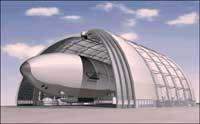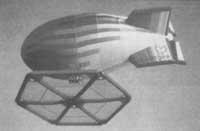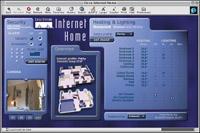The return of Zeppelin XXI. century
2001/07/01 Urresti, Igor - Elhuyar Zientziaren Komunikazioa Iturria: Elhuyar aldizkaria
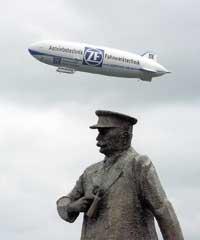
In 1900, at the beginning of the century, Count Zeppelin built the guided ball of the first rigid structure. In 1910 the company DELAG launched the first regular line of air transport and in 1920 the 196 m long English ball R34 crossed the Atlantic Ocean for the first time. The future of the guided balls had no fogs ahead!
The guided balloons of the time had capacity for 30 people, to travel with unprecedented comfort. Graff Zeppelin could reach 128 km/h and went around the world for 12 days. Several constructions were made with this future in mind: The tip of the Empire State Building in New York was also designed to tie the guided balls and use them as ‘airports’.
But on May 6, 1937, at Lakehurst Air Force Base in New Jersey, the LZ129 Hindenburg suffered a terrible accident. At first the Hinderburg was going to use helium, but since Hitler was a mature man, the Americans did not sell helios to the Germans and decided to use hydrogen. When it was 300 m from the arrival, the spark created in the rear was enough to calcinate in 34 seconds the ball guided of 245 m of luxury. Fortunately, of the 97 travelers he had alone, 34 died.
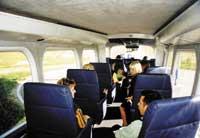
Since then little has been heard about the guided balls. The most used have been the balls without rigid internal structures. They are mainly used for special military applications or for advertising. On television is also used the fixed camera for events that have to have for a long time in the air, Olympic games, etc. But costs did not make it viable for other applications.
Guided balls are also suitable for scientific applications. The balls offer a vibration free and slow speed platform for carrying observation instruments. In some cases the planes are inadequate due to speeding. For example, guided balloons are ideal for measuring the spread of greenhouse gases into the atmosphere.
But on this occasion, thanks to the development of materials and aeronautics, the price and characteristics allow to use the guided balls in other applications.

In 1993, the company Zeppelin Luftschifftechnik GmbH, after 60 years without a guided ball, decided to make guided balls again. The new ball has been named Zeppelin NT (New Technology) and is already flying. In 1997 he made his first flight against the 30,000 zeppelistas and since then he made 800 hours on test flights. Zeppelin NT will be used mainly in tourism. Guided balloons, planes or helicopters offer tourists a tranquility they do not offer. It allows a much more economical, quiet and silent way of making the return of several hours and allows pyramids or African savannah, etc. allows to see it with tranquility. In fact, the first Zeppelin has been purchased for the Swiss Alps.
The cover of the new ball is Tedlar and Polyester. These materials are waterproof and can therefore store the balls outside the hangar (formerly cotton and could also take weight with rain and break). The internal structure of the ball is also made of aluminum and carbon fiber, so the guided balls have much less weight (and less need for volume) than the previous ones. The price will be 90 million pounds (1.2 billion pesetas).
Guided balloons for cargo
But they are not the applications that ensure the future of guided balls. The most ambitious and relevant project is carried out by another German company. Lifter AG has launched in the city of Brand, 60 kilometres from Berlin. The strength of the project is supported by ABB, Siemens and Thyssen, which are behind it. 400 million German frames (34 billion pesetas. 1,360 million pounds invested.
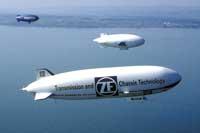
It is clear what will be the market of the giant CL-160 guided ball that the Lifter company will build. It will not compete to transport products that must be transported quickly. Its objective is to transport elements of great weight or large volume at great distances. As large electricity generators, turbines, parts for refineries, etc.
CL-160 will be able to carry 160 tons of cargo (27 adult African elephants), more than the larger Boeing 747 or the two loaded C-130 Hercules. The measures are also not subsequent: 242 m long and 550.000 m volume 3. The new CL-160 will have a range of 10,000 km and will circulate between 80 and 100 km/h. The price of each CL-160 is 75 million dollars (13 billion pesetas. 500 million pounds).
| Lifter is a market of 1.3 billion dollars for the transport of special products of large volume or weight in the next 20 years. At the moment, they will be able to act four times a year.
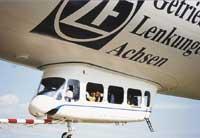
The main advantage of the CL-160 is that it does not need any special infrastructure to catch or leave the load. You can pick up and drop the load anywhere and do not need runways or takeoff. Thus, until now it avoids the use of the train, the boat and the train, transporting it at a similar price and in a much shorter time. In many cases, due to the size of the elements to be transported, for transport by conventional transport it was necessary to distribute them in several parts and their subsequent assembly. The CL-160 will take the complete elements in the factory and deposit them in the right place. It seems that he has already started working with the company Airbus to bring the parts of the new A380 aircraft from Bordeaux to Toulouse.
• Lifter company builds hangar to build cl-160 The CL-160 is custom built for construction. 360 m long, 210 m wide and 107 m high. The new hangar lacks an inner rod and its entire structure rests on five large arches. For the foundations 40,000 m 3 have been used and the construction of the arches has required 15 tons of steel.
|Lifter is not the only company involved in this adventure. In Britain, AGT has also developed SkyCat. At the moment, SkyCat is capable of carrying 15 tons of weight, but they say that in short they will also have available 200 tons (although it may seem a little utopian, according to AGT managers a SkyCat of 1,000 tons is being designed). The main peculiarity of the SkyCat is its appearance: it has a similar appearance to if two elongated balls, known so far, were stuck together.
Not all are advantages
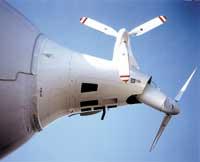
But not all are advantages for guided balls. To begin with, they must carry a large volume of helium to carry large weights, so the dimensions of the guided balls must be really large.
Time dependence is very high. The wind and the state of time greatly condition your work when taking off or catching and leaving the load. Ground operators when landing balls must anchor the ball and it is not easy task in bad weather. In addition, in no case can the time required for the actual trip be accurately foreseen. Finally, to compensate for the sharp upward trend at the time of load release, a special ballast catchment system is also required at the time of loading and unloading.
Other projects
But there are other ways to ensure the future of guided balls. The main one will be the hybrid between planes and balls.
Lockheed Martin works on a project supported by NASA itself. In order for the new hybrid ball to remain, in addition to the strength of helium, it will have lateral wings that support the main part of the weight. These new ‘balls’ are called Aerocraft.
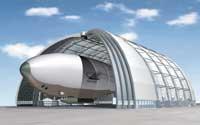
The new form can have great advantages in some areas. The main advantage is the volume of the ball. As the wings also participate in the ascending momentum, not so much helium is needed and such a useful Aerocraft in size will be able to carry 500 tons of weight.
As for speed, these hybrid balls can reach a speed of 300 km/h, comparing the high speed with the 100 km/h of the CL-160.
Of course, the new Aerocraft that is being designed will need runways to take off and therefore will have to use existing airports.
However, they are focused on two totally different markets. This type of Aerocraft adapts much better to the ‘normal’ load (containers, etc.) transport. On the other hand, the usual guided balls developed by LinearLife are more suitable for transporting large loads of different shapes and shapes over great distances.

Gai honi buruzko eduki gehiago
Elhuyarrek garatutako teknologia



